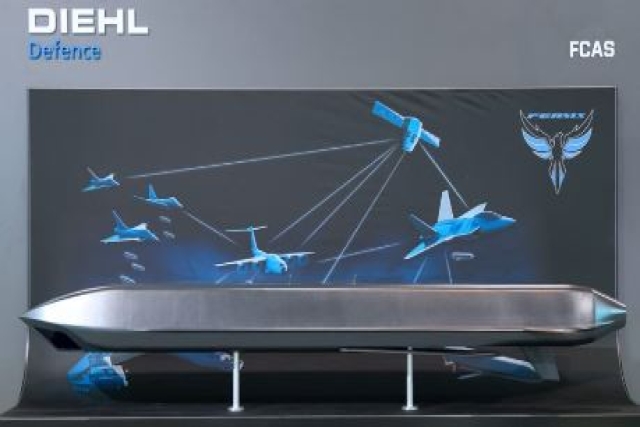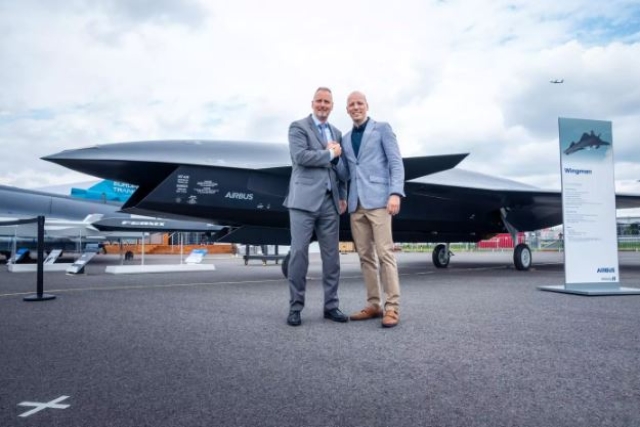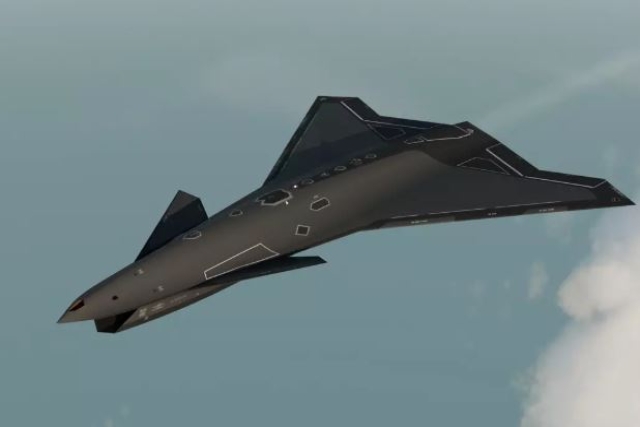Diehl Defence Presents FEANIX Loyal Wingman at ILA Berlin
FEANIX is a modular, networked, low-observable light remote carrier offering customizable payloads, multi-domain launches, and swarming attack capabilities.

Diehl Defence has unveiled the Light Remote Carrier FEANIX (Future Effector - Adaptable, Networked, Intelligent, Xpendable) at ILA Berlin 2024, running from June 5 to June 9.
The low-observable (LO) Light Remote Carrier (LRC) weighs under 300 kilograms and measures less than 4 meters in length. FEANIX can be launched from air, land, or sea, making it a formidable force in any operational scenario. With its modular design, the LRC can be customized with a range of payloads, from sensors to lethal and non-lethal effectors.
The FEANIX is not just a standalone weapon; its networking and swarming capabilities enable coordinated attacks with precision and efficiency.
“LRCs [such as FEANIX] are the missiles of the future in operational, overall joint forces operations in order to master the upcoming challenges within the networked and highly competitive battlefield,” Diehl said. “Their teaming and swarming capability is a game changer in future scenarios.”
Full- and subscale models of the FEANIX were showcased alongside the Eurofighter Typhoon and the New Generation Fighter (NGF), core to the Future Combat Air System (FCAS) program at the ILA Berlin event.
The modular FEANIX can integrate various payloads, from sensors to lethal and non-lethal items.
Alexander Brugger, FEANIX project lead, told Breaking Defense that development is expected to start in the early 2030s, with Diehl self-funding the initial design phase. The company is considering air-, land-, and sea-launched capabilities for multi-domain requirements. A testbed platform is planned by 2028, with a prototype built at Diehl’s Uberlingen facility.
The FEANIX, described as a modular cruise missile, features a front section for various payloads and a body with an air-breathable engine. Key operational priorities include Suppression and Destruction of Enemy Air Defenses (SEAD and DEAD). A networked group of remote carriers can combine jamming, targeting, and effectors for greater effectiveness.
Remote carriers are integral to the German, French, and Spanish FCAS next-generation fighter program, expected to be developed in various sizes for different missions, enhancing combat mass and keeping manned platforms out of enemy range. Brugger emphasized that future manned fighters will be more expensive and complex, necessitating the use of unmanned platforms to maintain combat capabilities.
Diehl is part of the FCAS Future Combat Mission System (FCMS) industrial consortium, aiming to engineer networked sensor and effector systems for joint operations. However, FEANIX is not limited by FCAS, allowing Diehl to independently develop the weapon system.











